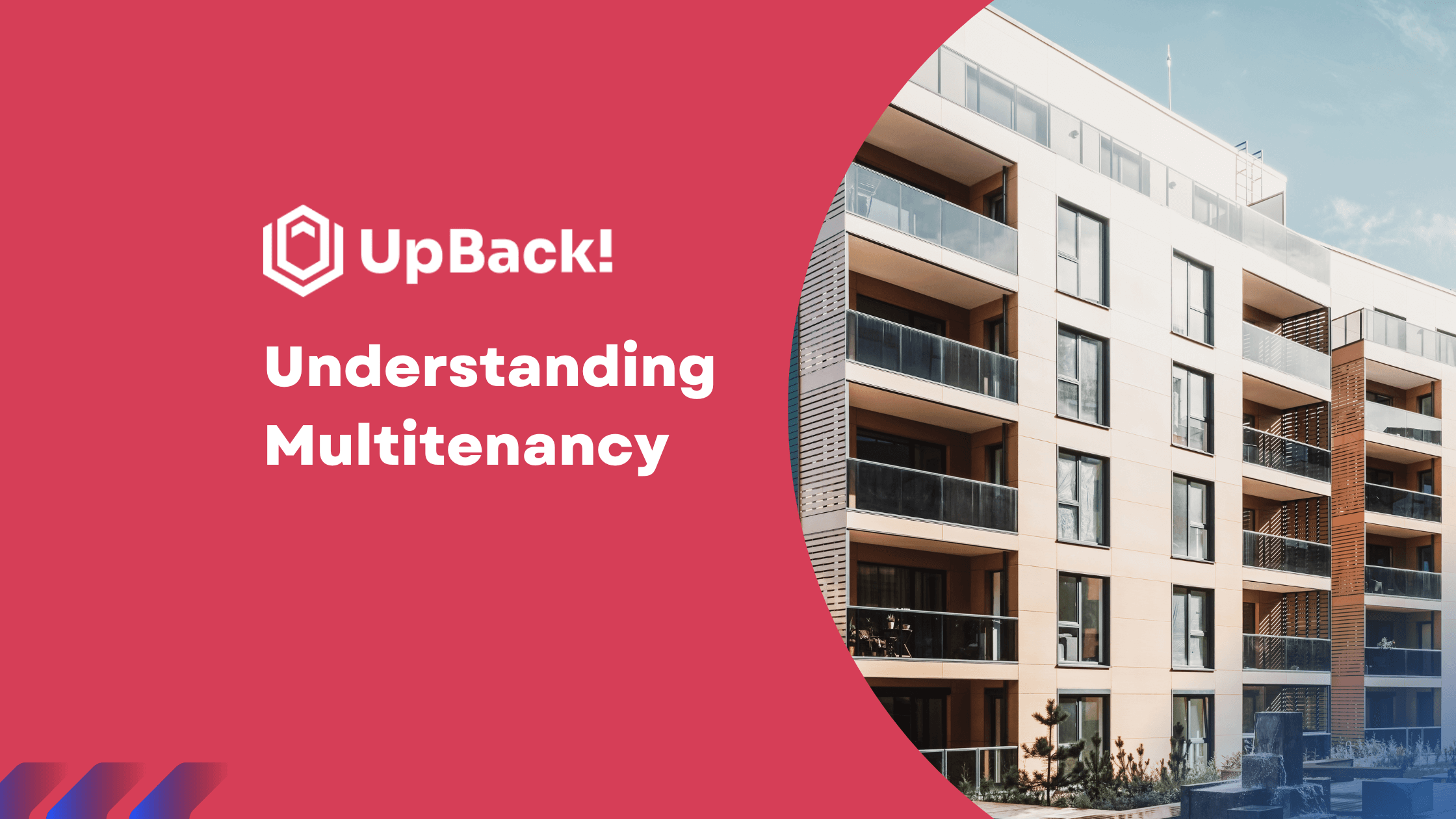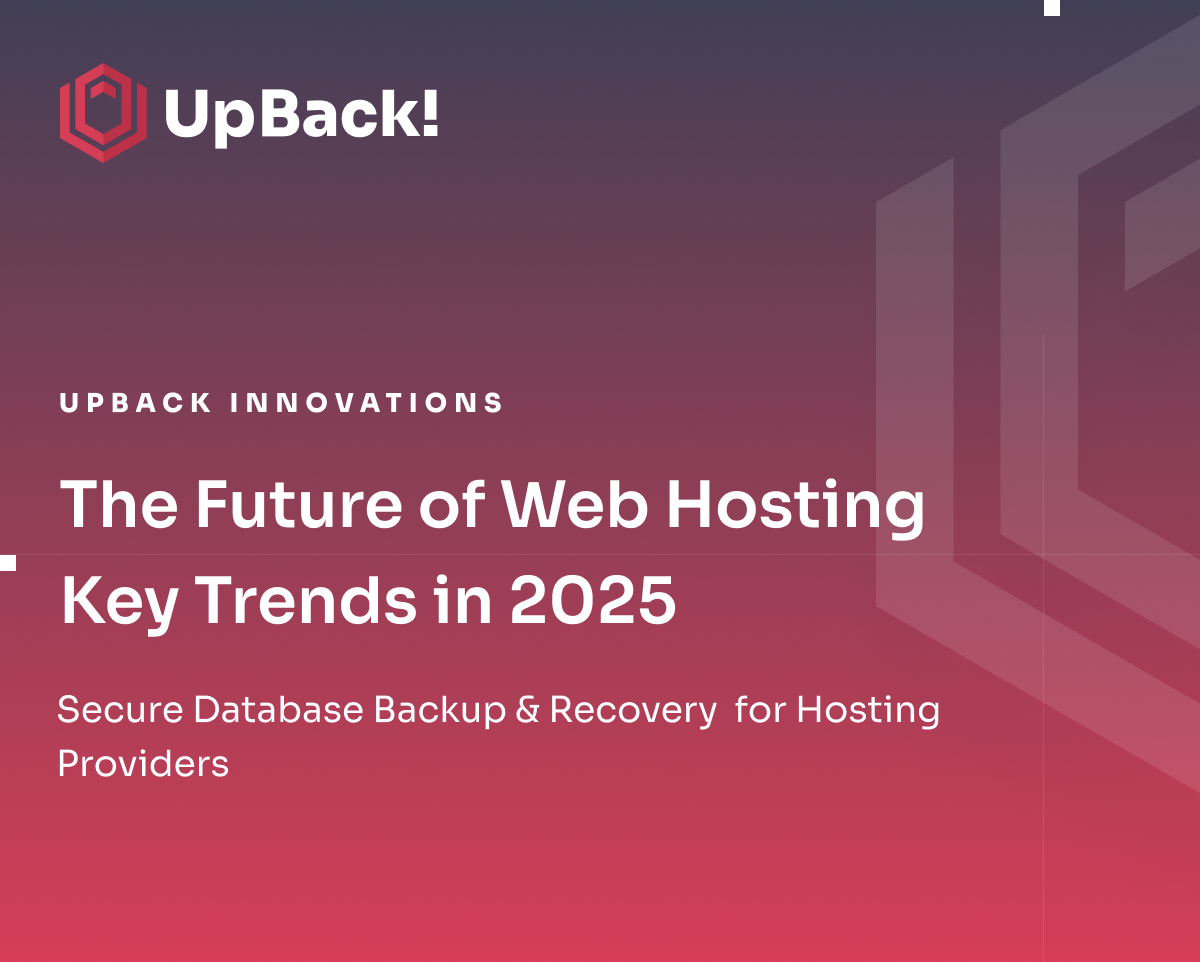Understanding Multitenancy: A Comprehensive Guide
Are you grappling with the inefficiencies and high costs of managing separate software instances for each customer? At UpBack, we understand these challenges intimately. Multitenancy is a crucial architecture for delivering efficient and scalable solutions in today's fast-evolving world of cloud services.
Consider multitenancy like a bustling apartment building: each resident (tenant) has a private unit, but they all share common infrastructure like water, electricity, and elevators. Similarly, in a multitenant environment, a single instance of software serves multiple customers, maximising resource utilisation while providing tailored experiences for each user.
This guide will explore multitenancy's core principles, significant benefits, challenges, and essential considerations for successful implementation. Whether you're leading a business towards digital transformation or are fascinated by tech innovations, understanding multitenancy is crucial for staying competitive.
At UpBack, we understand the complexities and demands of managing multitenant environments, especially regarding backup and recovery for databases like MariaDB, MySQL, and PostgreSQL. Our insights and expertise can help you navigate these challenges, ensuring your systems are secure, scalable, and efficiently managed.
What is Multitenancy?
Multitenancy is a software architecture in which a single instance of a software application serves multiple customers, known as tenants. Each tenant operates in a virtually isolated environment, ensuring their data and user experience are secure and unique.
This setup is akin to an apartment building, where each tenant has a private unit but shares common infrastructure such as plumbing and electricity.
Comparison with Single-Tenancy
In a single-tenant architecture, each customer has a dedicated instance of the software, database, and supporting hardware infrastructure. This setup provides high customisation and security but at a higher cost and with more complex maintenance requirements.
Conversely, multiple customers share the same application instance and infrastructure in a multitenant architecture. While this can introduce challenges in ensuring data security and isolating workloads, it offers significant cost savings, scalability, and maintenance efficiency.
Key Differences:
Cost and Resource Efficiency: Multitenancy reduces costs by sharing resources among multiple tenants, whereas single-tenancy requires separate resources for each tenant, increasing costs. According to IBM, multitenancy can lower infrastructure costs by up to 50% compared to single-tenancy.
Scalability: Multitenant systems can quickly scale by adding new tenants to the existing infrastructure. In contrast, single-tenant systems need additional resources and instances for each new tenant. This makes multitenancy particularly advantageous for businesses expecting rapid growth.
Maintenance and Updates: In multitenancy, updates and maintenance are simplified as they are applied to a single instance that serves all tenants. In single-tenancy, each instance must be updated separately, which can be time-consuming and error-prone.
Understanding these distinctions helps grasp why multitenancy has become a foundational element of modern cloud services. It enables efficient resource use and cost-effective service delivery while supporting diverse user groups' customisation and security needs.
Benefits of Multitenancy
Resource Efficiency:
Multitenancy optimises resource use by sharing infrastructure among multiple tenants. Instead of each tenant requiring a separate instance of the software and dedicated hardware resources, a multitenant system allows multiple tenants to share the same infrastructure. This maximises the utilisation of computing resources such as CPU, memory, and storage, resulting in better performance and reduced resource waste. According to the National Institute of Standards and Technology, multitenancy significantly optimises resource utilisation and enhances scalability in cloud computing environments.
Cost Reduction:
One of the most significant benefits of multitenancy is cost reduction. By sharing infrastructure, service providers can spread the costs of hardware, maintenance, and operations across multiple tenants. This shared approach reduces overall expenditure for the service provider and the customers.
Scalability:
Multitenancy inherently supports scalability and the easy expansion of services. As a business grows and adds more users, a multitenant system can accommodate this growth without requiring extensive reconfiguration or additional hardware. New tenants can be added seamlessly to the existing infrastructure, allowing the service to scale horizontally.
Types of Multitenancy
Database Level:
Shared Database Shared Schema: Multiple tenants share the same database and schema. Tenant data is distinguished using a tenant identifier. This method requires robust mechanisms to ensure data isolation and security.
Isolated Database: Each tenant has its own separate database, which provides the highest level of data isolation and security but at a higher resource cost.
Application Level:
Single Instance, Multiple Tenant Logic: A single application instance serves multiple tenants, including logic to distinguish between tenants. This is cost-effective and easy to manage.
Multiple Instances, Tenant-Specific Customisations: Deploy multiple instances of the application, each tailored to specific tenant needs. This approach offers high customisation but is more complex to manage.
Key Considerations for Multitenancy
Data Isolation: Ensuring data privacy and isolation between tenants is paramount. This can be achieved through logical, physical, and strict access controls. Data isolation protects tenant privacy and ensures compliance with regulatory requirements.
Security: Key security strategies include encryption, robust authentication and authorisation mechanisms, and continuous monitoring and auditing. These measures help mitigate risks associated with shared infrastructure, ensuring each tenant's data and services remain secure.
Performance: Performance management ensures equitable resource distribution among tenants. Solutions include setting resource quotas and limits, implementing load-balancing techniques, and continuously monitoring performance metrics.
Customisation: Multitenancy allows individualised configurations and settings to support tenant-specific customisations without affecting others. This flexibility is achieved through configurable interfaces, feature toggles, and theming and branding options.
Implementing Multitenancy
Design Patterns:
Shared Schema: All tenants share the same database and schema, with a tenant identifier column in each table to differentiate tenant data. This approach is resource-efficient and easier to manage but requires robust security measures to ensure data isolation.
Separate Schema: Multiple tenants share the same database, but each has its own schema. This pattern provides better data isolation than a shared schema and allows tenant-specific optimisations. However, it is more complex to manage and still shares database resources.
Isolated Database: Each tenant has a separate database, providing the highest level of data isolation. This maximises data security and isolation, making complying with data privacy regulations easier. However, it is more resource-intensive, costly, and complex to manage.
Container-Based: Each tenant's application instance runs in a separate container, ensuring isolation at the container level. This method offers high isolation, flexible deployment, and scalability. However, it requires container orchestration and management and may incur higher overhead.
Best Practices:
Strong Data Isolation:
Robust data isolation mechanisms are essential to segregate and secure tenant data. This includes using encryption for data both at rest and in transit.
Scalable Architecture:
Design the system to scale horizontally to efficiently handle increasing tenants. Load balancing should be employed to distribute workloads evenly.
Automated Provisioning:
Automate the provisioning and de-provisioning of tenants to minimise manual intervention and errors—Utilise infrastructure-as-code (IaC) tools to manage resources effectively.
Comprehensive Monitoring and Logging:
Implement extensive monitoring and logging to track performance, detect issues, and ensure compliance. Centralised logging solutions should aggregate logs from different tenant environments.
Customisability:
Implement feature toggles and configurable settings to enable tenant-specific customisations. This will allow tenants to customise their user experience without affecting others.
Challenges and Solutions:
Tenant Isolation:
It is critical to ensure that data and configurations for one tenant do not interfere with another. This is achieved through robust access control mechanisms, strict data isolation techniques, and regular security audits. The National Institute of Standards and Technology (NIST) highlights the importance of robust data backup and recovery strategies to mitigate risks associated with shared infrastructure in multitenant environments
Billing:
It is essential to accurately track and bill tenants for their resource usage. This involves implementing metering and usage tracking systems that measure resource consumption per tenant and using these metrics to generate precise billing reports.
Support:
Providing efficient support to multiple tenants with varying needs requires a robust support system with tenant-specific logging and diagnostics. A ticketing system is also essential to manage and track support requests effectively.
Performance:
Maintaining consistent performance across all tenants, especially during peak usage, is crucial.
This can be managed by implementing resource quotas and limits to prevent any single tenant from monopolising resources and using performance monitoring tools to detect and address bottlenecks promptly.
The Vital Role of Backup and Recovery in Multitenancy
In a multitenant environment, backup and recovery are essential to ensure data integrity, availability, and security. Here's why these components are so vital:
Data Protection: With multiple tenants sharing the same infrastructure, the risk of data loss or corruption increases. Regular backups ensure tenant data can be restored during a failure or attack.
Business Continuity: Effective recovery solutions minimise downtime, ensuring businesses can quickly resume operations after a disruption. This is critical in maintaining the trust and satisfaction of your tenants.
Compliance: Many industries have stringent data protection regulations. Comprehensive backup strategies help meet these compliance requirements by ensuring that data is securely stored and can be retrieved when needed.
Cost Efficiency: Implementing robust backup and recovery processes can prevent costly data loss incidents and reduce the financial impact of potential disruptions.
Understanding multitenancy is crucial for achieving efficient resource utilisation, cost savings, and scalability. As cloud technologies advance, multitenant architectures will become more efficient and secure, driving the evolution of Software as a Service (SaaS) and other cloud-based services.
The UpBack! Way
At UpBack!, we provide robust backup and recovery solutions for large and small companies. Backup and recovery are vital components of a successful multitenant architecture, ensuring your data is secure, accessible, and resilient.
Stay Updated: Subscribe to our blog to stay informed on the latest trends and best practices in multitenancy, with a focus on backup and recovery strategies.
Learn More: Visit our partnership page to book a session and discuss how our backup and recovery expertise can benefit your business within a multitenant environment.
In-Depth Resources: Explore our comprehensive Wiki for detailed information and resources to support your backup and recovery needs.
Free Trial: Try our solutions with a seven-day free trial.

%20(1).png)
%20(1).png)

